"Lion Dance Obstacle Course" • MOE Kindergarten @ Tampines
Overview
Obstacle courses provide great opportunities for children to develop their gross motor skills in a playful manner. Living in a multi-cultural city like Singapore, it is also essential for children to be provided with opportunities to learn about the ethnic cultures around them. In this activity, the children in K2 Happy Penguins and K2 Rainbow Cupcakes at MOE Kindergarten @ Tampines set up their own obstacle course as they built on their prior knowledge of the lion dance.
| Learning Areas | Learning Goals | |
| Motor Skills Development (MSD) |
| |
| Social and Emotional Development (SED) | LG 4: Communicate, interact and build relationships with others |
Learning Objectives
Children were given opportunities to:
1. Practise their gross motor skills (e.g. balancing and crawling) as they move through an obstacle course
2. Work with their friends as they help each other through the obstacle course
Exploring the movements of lion dance
As part of the children’s project on lion dance, they watched several videos of lion dance performances. As they watched the videos, the teacher invited the children to pay attention to the different kinds of movement the lions did.
| “Sometimes the lion will squat down at the pole and look at the audience.” |
"The lion dancers can balance and walk on the long plank." |
"The lion dancers will also crawl very low, on the floor to pick up something." |
"The lion dancers jump from one pole to the other pole then jump to the next pole." |
"The lion dancers move faster when the music is loud and shakes a lot." |
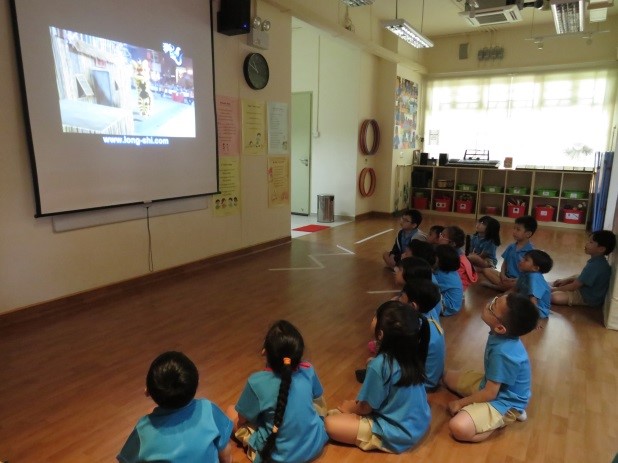
Setting up the obstacle course
| “The lion will sometimes jump from one pole to another pole. So, our obstacle course needs things that we can jump. But it cannot be too high, if not it will be dangerous.” |
| “We can use the hula hoops so that we can jump and shake. When they jump, the lion dancers will stop and shake their tails. |
| “We need a bridge to walk across and balance just like the lion dancer on the plank.” |
| "We can put some parts where we will crawl because sometimes the lion will crawl slowly from right to left and stare at the audience.” |
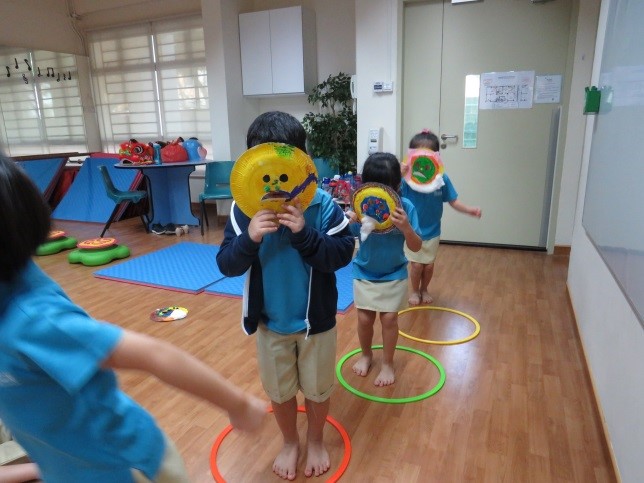 | 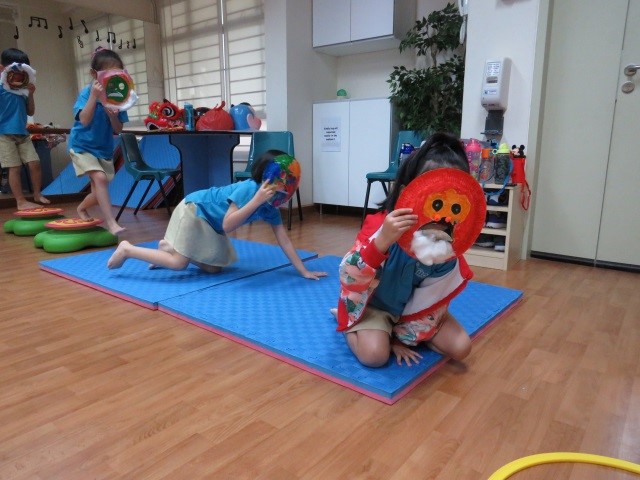 |
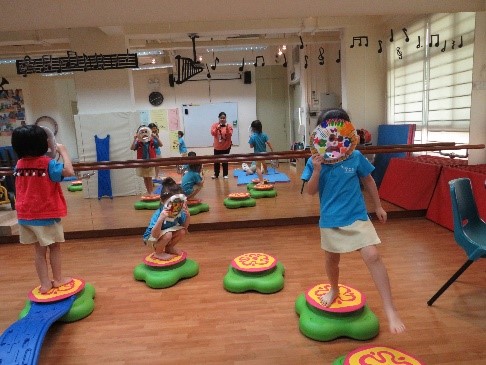 | 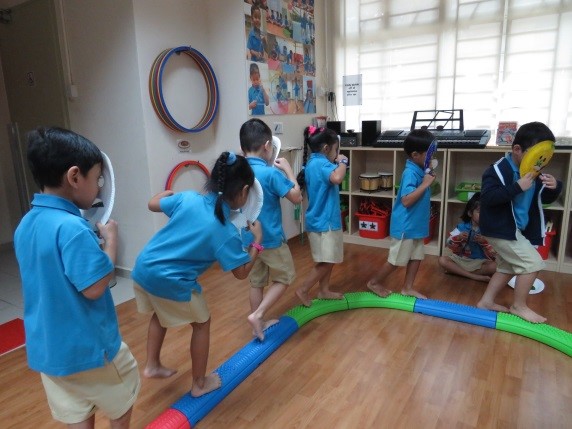 |
By allowing the children to design their own obstacle course, it provided opportunities for the children to share and communicate their ideas based on the knowledge that they have constructed about lion dance. This promotes collaboration and teamwork. Using the children’s ideas, the teacher helped them to construct their ideal obstacle course using the equipment available. Through this obstacle course, the children were able to practise their locomotor movement skills such as balancing, jumping, crawling and hopping.
Working together to navigate the obstacle course
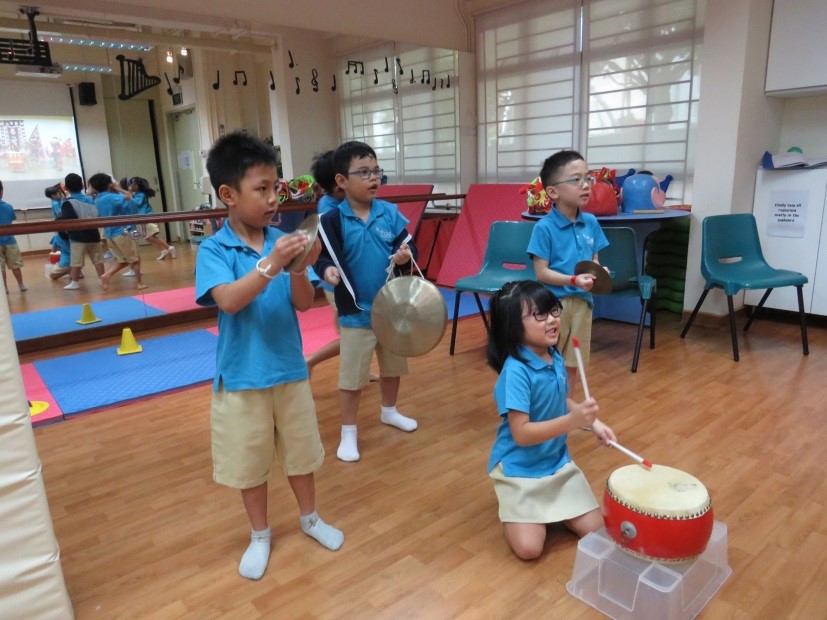
Conclusion
Tapping on their understanding of lion dance, the children were able to discuss collaboratively as a class to design their own lion dance obstacle course. The obstacle course also provided children with an authentic context for them to use and practise their locomotor movements such as balancing and jumping.
Contributed By:
Ms Yuen Wai Yan Joey, EL Teacher
MOE Kindergarten@Tampines